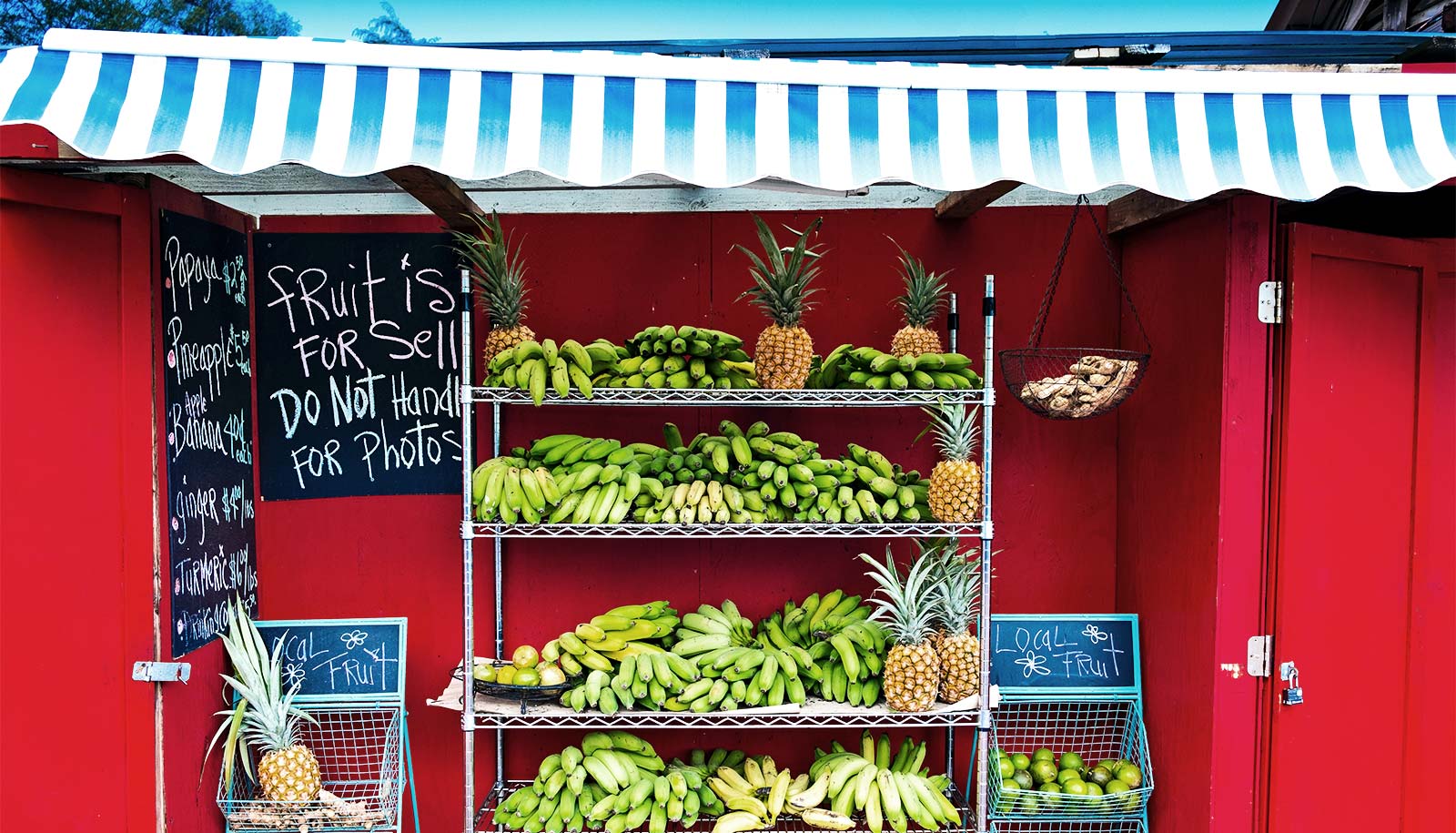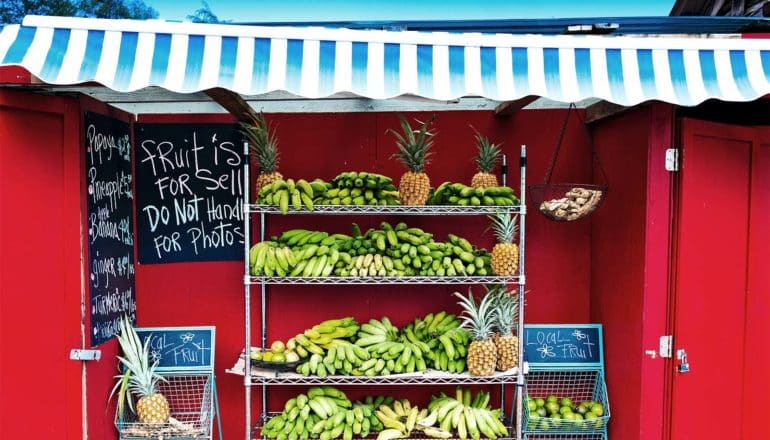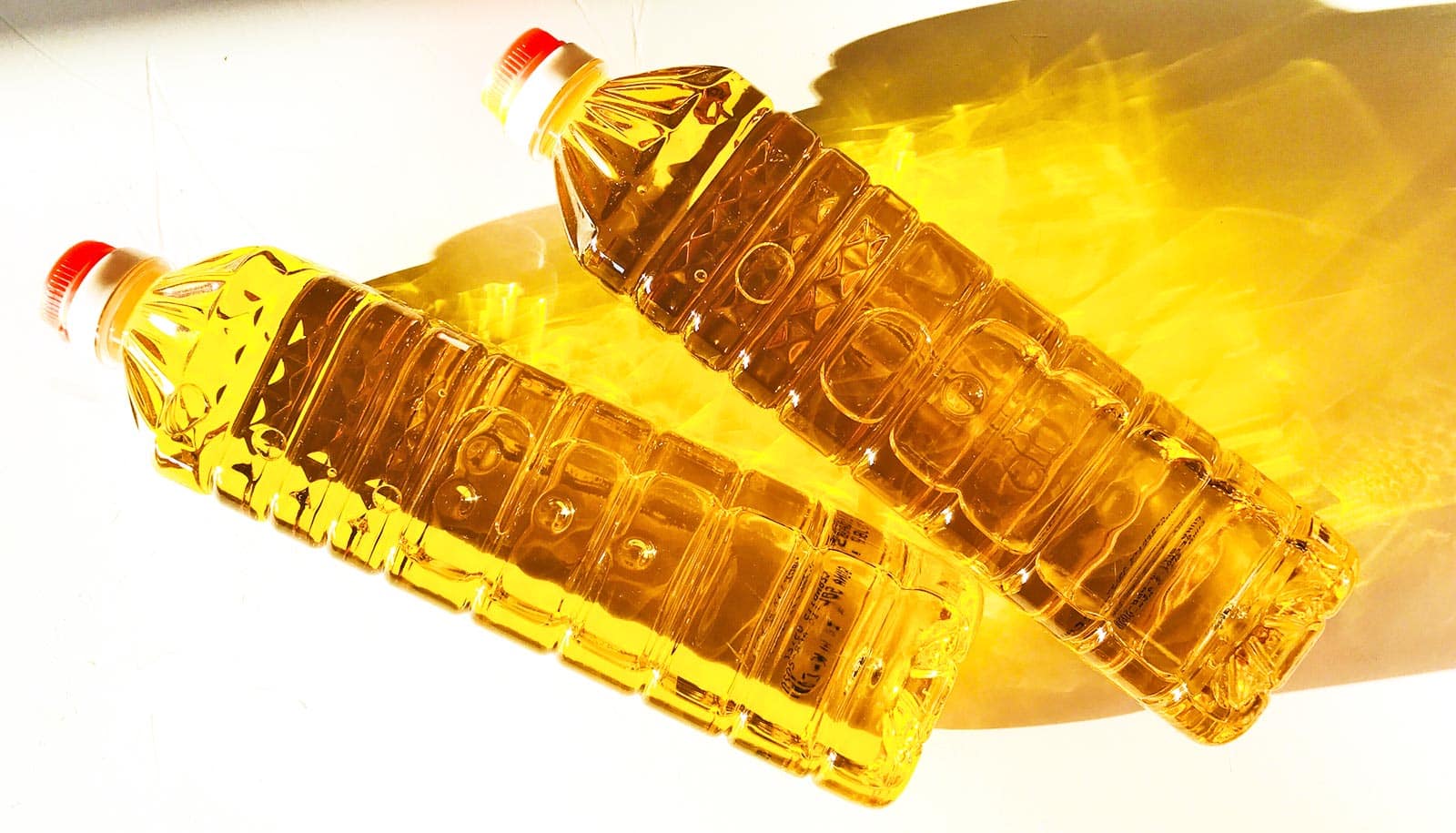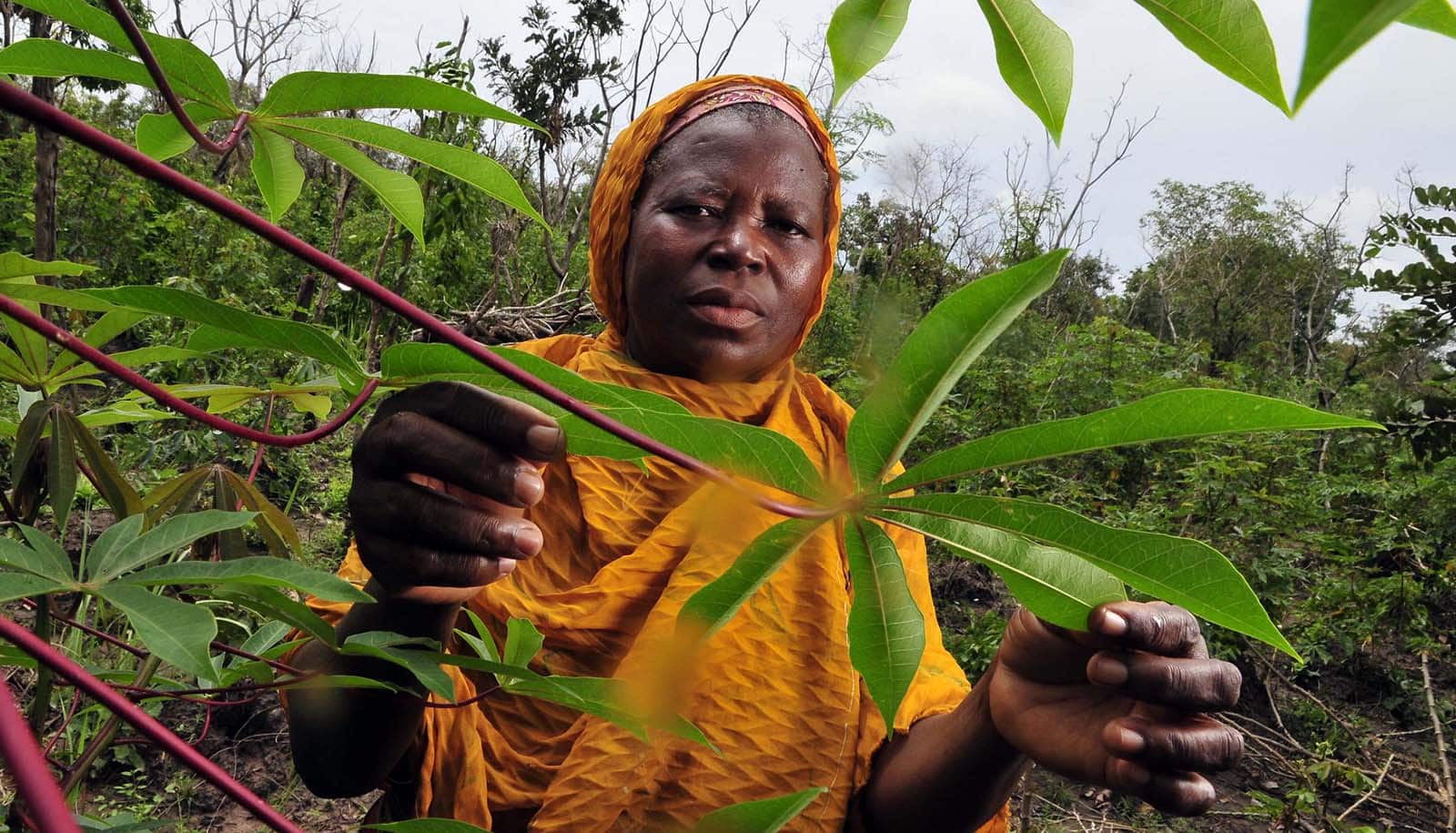
(Credit: Matt Brown/Unsplash )
Light-up probes can say when fruit is ripe
A new probe that says when fruit is ripe could help with harvesting and storage.

New fluorescent probes detect ethylene gas and would be useful for fruit harvesting and storage.
Ethylene is a gaseous plant hormone which regulates a wide range of biological processes in plants. It is associated with the ripening processes in a number of fruits, such as apples and pears.
Better understanding of the effects of ethylene concentration on the ripening process can lead to improved management of fruit harvesting, storage, and transportation. However, current methods that measure ethylene gas are time-consuming and rely on sophisticated instrumental methods. These methods include gas chromatography and photoacoustic spectrometry.
The fluorescent probes provide a convenient way to visually detect the presence of ethylene gas released from the fruit ripening process through a simple fluorescence microscope. The researchers developed the probes from a class of transition metal carbene complexes known as Grubbs catalysts. They can detect ethylene up to a level of 0.9 ppm (parts per million) in air.
In the presence of other possible gaseous species that ripening fruits may also emit (e.g., carbon dioxide, sulphur dioxide, and hydrogen sulphide), the research team found that the effectiveness of the probe in detecting ethylene gas was not affected, showing that the probe is selective. The probe could detect the ethylene formation during fruit ripening to determine the fruit maturity levels for harvesting and storage.
The probe contains weakly fluorescent molecules which activate when they detect ethylene gas. The color intensity increases when the probe detects more ethylene gas. The research team used the probe to monitor the ethylene gas emitted by four different types of fruits (passion fruit, avocado, banana, and apple) and found that the ethylene release rate increases linearly with storage time.
Their results are consistent with previous studies using other detection methods, showing the application potential of the probes.
“This research opens up a new avenue for the application of Grubbs catalysts in the bioanalytical chemistry of ethylene, which is important for plant biology, agriculture, and the food industry,” says Huang Dejian of the Food Science and Technology Program at the chemistry department at the National University of Singapore.
The research appears in the Journal Of Agricultural And Food Chemistry.
Source: National University of Singapore
The post Light-up probes can say when fruit is ripe appeared first on Futurity.
Share this article:
This article uses material from the Futurity article, and is licenced under a CC BY-SA 4.0 International License. Images, videos and audio are available under their respective licenses.


